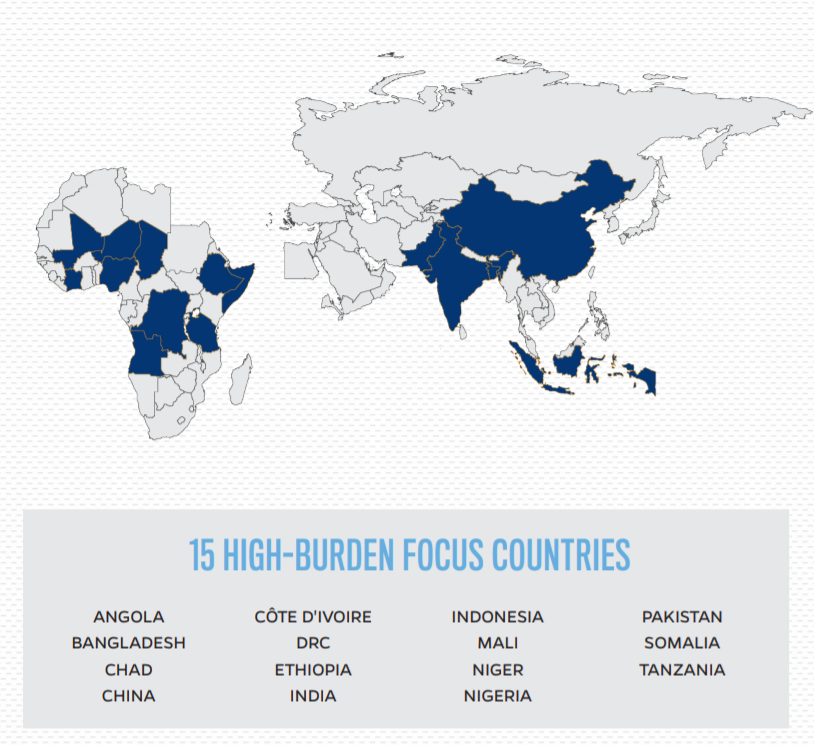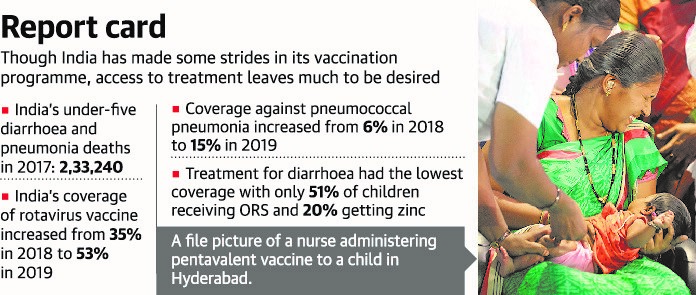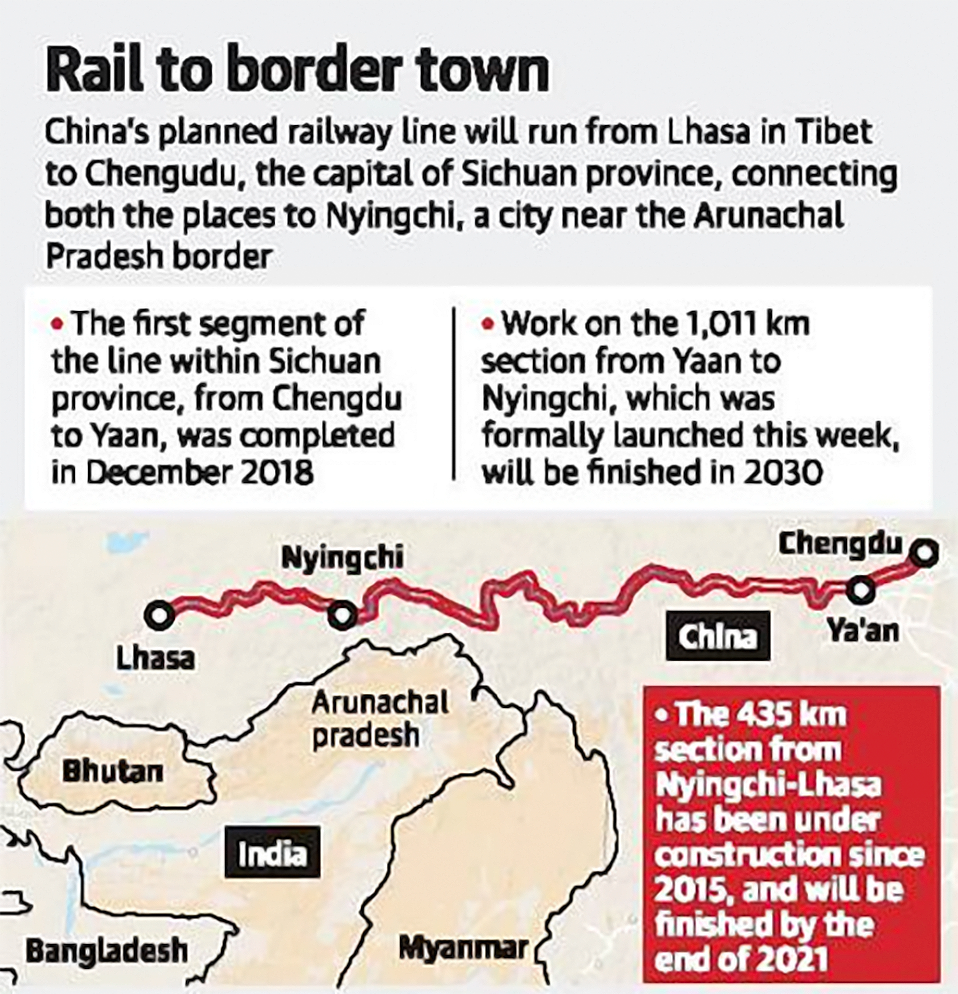International Relations
RCEP Comes into Existence
Why in News
Recently, the Regional Comprehensive Economic Partnership (RCEP) has come into existence on the sidelines of the 37th ASEAN Summit.
- It has laid down the path for restarting discussion that had failed to admit India earlier and said “new” developments would be taken into consideration if India re-applies.
Key Points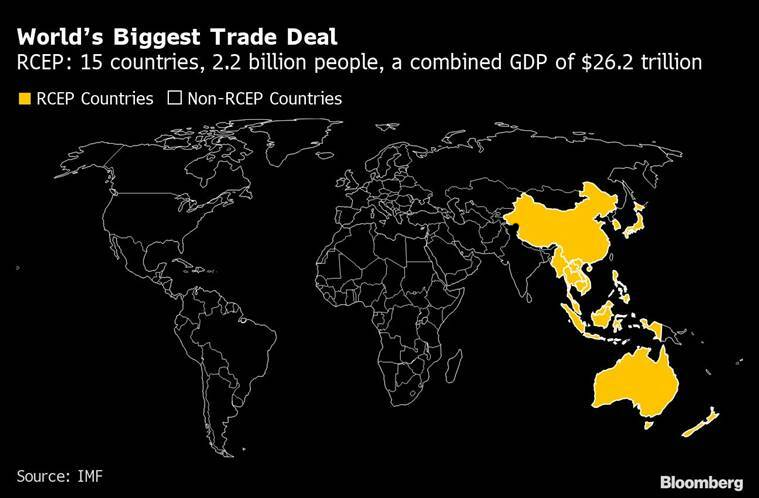
- Regional Comprehensive Economic Partnership:
- It consists of 10 Association of Southeast Asian Nations (ASEAN) members, as well as South Korea, China, Japan, Australia and New Zealand.
- It excludes the USA, which withdrew from the Trans-Pacific Partnership (TPP) in 2017.
- Negotiations over the RCEP deal began in 2012. India was also part of the negotiations but it pulled out in 2019 over concerns that lower tariffs could hurt local producers.
- Members of the RCEP make up nearly a third of the world's population and account for 29% of global gross domestic product (GDP).
- The China-backed group will emerge as the largest free trade agreement (FTA) in the world surpassing both the US-Mexico-Canada Agreement and the European Union (EU).
- It is expected to eliminate a range of tariffs on imports within 20 years and also includes provisions on intellectual property, telecommunications, financial services, e-commerce and professional services.
- Under RCEP, parts from any member nation would be treated equally, which might give companies in RCEP countries an incentive to look within the trade region for suppliers.
- Businesses with global supply chains might face tariffs even within an FTA because their products contain components that are made elsewhere.
- The deal could increase global national income by USD 186 billion annually by 2030 and add 0.2% to the economy of its member states.
- However, some analysts think the deal is likely to benefit China, Japan and South Korea more than other member states.
- However, it could be some time before any country sees the benefits, because six Asean nations and three other nations have to ratify it before it takes effect.
- Ratification will likely be tricky in national parliaments, owing to both anti-trade and anti-China sentiments among the countries.
- It consists of 10 Association of Southeast Asian Nations (ASEAN) members, as well as South Korea, China, Japan, Australia and New Zealand.
- Significance for China:
- The beginning of RCEP is a major development that will help China and trade in the Asia-Pacific region in the post-Covid-19 scenario.
- It will give China access to Japanese and South Korean markets in a big way, as the three countries have not yet agreed on their FTA.
- While China already has a number of bilateral trade agreements, this is the first time it has signed up to a regional multilateral trade pact.
- India’s Stand:
- While addressing the ASEAN Summit, India highlighted the necessity for peace and stability in the region but maintained silence regarding RCEP as it is not very welcoming of the China-backed grouping in the light of the ongoing military tension in eastern Ladakh along the Line of Actual Control (LAC).
- In the meantime, India held Malabar Exercise with Japan and the USA for the Quadrilateral Security Dialogue (QUAD) which was interpreted as an anti-China move.
- However, these moves did not influence Japanese and Australian plans regarding RCEP.
- India ended negotiation on RCEP over terms that were perceived to be against its interests.
- One of the major concerns for India was inadequate protection against surges in imports as its industry had fears that signing RCEP would allow cheaper products from China to flood the market in India.
- The extended power to China could lead to actions and incidents eroding trust in the maritime region disrespecting the territorial integrity and sovereignty.
- For example, the ongoing tensions at LAC and Chinese activities in Pakistan-occupied Kashmir.
- RCEP on India’s Membership:
- India, as an original negotiating participant of the RCEP, has the option of joining the agreement without having to wait 18 months as stipulated for new members in the terms of the pact.
- RCEP signatory states plan to commence negotiations with India once it submits a request of its intention to join the pact "in writing", and it may participate in meetings as an observer prior to its accession.
Way Forward
- The mega trade bloc is a landmark trade initiative which is expected to boost commerce among the member-countries spread across the Asia-Pacific region.
- India needs to keep its interests on the table as the road to further expansion of its exports to RCEP member nations is very much still open, given that India already has trade and investment agreements with 12 of them.
- Utilising existing agreements better while proactively exploring new opportunities in other geographies will diversify both Indian markets as well as an export basket.
Social Justice
Pneumonia and Diarrhoea Progress Report 2020: IVAC
Why in News
Recently, the annual Pneumonia and Diarrhoea Progress Report has been released by the International Vaccine Access Centre (IVAC).
- IVAC, founded in 2009, accelerates equitable access to vaccines through the generation, synthesis, and use of evidence to inform decision-making and action. It is located in the Johns Hopkins Bloomberg School of Public Health, USA.
Key Points
- About the Report:
- It evaluates the progress across 10 high-impact indicators outlined in the Global Action Plan for the Prevention and Control of Pneumonia and Diarrhoea (GAPPD) in the 15 countries with the greatest burden of under-five pneumonia and diarrhoea deaths and how they are delivering key interventions to prevent these.
- These interventions include breastfeeding, immunisation, care-seeking and antibiotics, Oral Rehydration Solution (ORS), and zinc supplementation.
- These measures are proven to help prevent deaths due to these illnesses and could help achieve the Sustainable Development Goal-3 (Good Health and Well-Being) target of reducing under-five mortality to at least as low as 25 per 1,000 live births by 2030.
- In 2009, the World Health Organisation (WHO) and United Nations Children’s Fund (UNICEF) launched the GAPPD, which proposes a multi-sectoral, integrated approach to reduce the incidence of severe pneumonia and diarrhoea, reduce the number of children under-five who are stunted, and end preventable childhood deaths from pneumonia and diarrhoea.
- This year’s report also addresses the emerging impacts of the Covid-19 pandemic.
- It monitors the coverage of five vaccines which are Diphtheria, Pertussis and Tetanus (DPT) vaccine, Measles-containing-vaccine first dose, Haemophilus influenzae type B, pneumococcal conjugate vaccine (PCV), and rotavirus vaccine.
- It evaluates the progress across 10 high-impact indicators outlined in the Global Action Plan for the Prevention and Control of Pneumonia and Diarrhoea (GAPPD) in the 15 countries with the greatest burden of under-five pneumonia and diarrhoea deaths and how they are delivering key interventions to prevent these.
- Global Status:
- Nearly every country included in the report lagged in access to treatments against pneumonia and diarrhoea.
- Overall the world’s health systems are falling short of ensuring that children have access to prevention and treatment services.
- India’s Performance:
- Of the 15 focus countries included in the report, India is one of the countries that exceeded targets for exclusive breastfeeding.
- The World Health Assembly (WHA) has set a target to increase the global rate of exclusive breastfeeding to at least 50% by 2025.
- Exclusive Breastfeeding: It means that the infant receives only breast milk. No other liquids or solids are given, not even water, with the exception of ORS, or drops/syrups of vitamins, minerals or medicines.
- India has made significant progress in its vaccination coverage to prevent child pneumonia and diarrhoea deaths.
- India has achieved the global target of 90% coverage for three of the five vaccines whose coverage is monitored in the report.
- However, India failed to reach all targets for treatment and the treatment for diarrhoea had the lowest coverage, with only 51% of children receiving ORS and 20% getting zinc.
- 90% treatment coverage for children with suspected pneumonia, including care by an appropriate health care provider and antibiotics and 90% treatment coverage for children with diarrhoea, including treatment with ORS and zinc supplements by 2025.
- Although there was progress in India in 2019, the Covid-19 pandemic threatens the gains because of disruptions caused in routine health services like immunisation and access to medical oxygen.
- Of the 15 focus countries included in the report, India is one of the countries that exceeded targets for exclusive breastfeeding.
Diarrhoea
- About:
- It is the passage of 3 or more loose or liquid stools per day, or more frequently than is normal for the individual. There are three clinical types of diarrhoea:
- Acute watery diarrhoea (lasts several hours or days, and includes cholera).
- Acute bloody diarrhoea (also called dysentery).
- Persistent diarrhoea (lasts 14 days or longer).
- It is the passage of 3 or more loose or liquid stools per day, or more frequently than is normal for the individual. There are three clinical types of diarrhoea:
- Causes:
- Diarrhoea is a symptom of infections caused by a host of bacterial, viral and parasitic organisms, most of which are spread by faeces-contaminated water.
- Water contaminated with human and animal faeces is of particular concern. Animal faeces also contain microorganisms that can cause diarrhoea.
- It can also spread from person-to-person, aggravated by poor personal hygiene, food prepared or stored in unhygienic conditions, unsafe domestic water storage and handling.
- Threat:
- The most severe threat posed by diarrhoea is dehydration, which occurs when lost water and electrolytes are not replaced.
- It may be life-threatening, particularly in young children and people who are malnourished or have impaired immunity.
- Prevention and Cure:
- Interventions to prevent diarrhoea, including safe drinking-water, use of improved sanitation and handwashing with soap can reduce disease risk.
- Diarrhoea should be treated with ORS, a solution of clean water, sugar and salt. In addition, nutrient-rich foods and zinc supplemental treatment shortens diarrhoea duration and improves outcomes.
Step Taken by India
- The government aims to achieve a target of reducing pneumonia deaths among children to less than three per 1,000 live births by 2025.
- In 2014, India launched the Integrated Action Plan for Prevention and Control of Pneumonia and Diarrhoea (IAPPD) to undertake collaborative efforts towards prevention of diarrhoea and pneumonia-related under-five deaths.
- Universal Immunization Programme (UIP) was launched by the government in 1985 and prevents mortality and morbidity in children and pregnant women against 12 vaccine-preventable diseases including pneumonia and diarrhoea.
- Social Awareness and Action to Neutralise Pneumonia Successfully (SAANS) Campaign to reduce child mortality due to pneumonia, which contributes to around 15% of deaths of children under the age of five annually.
- In 2019, the government of India launched a rotavirus vaccine drive across all states and Union Territories, which was an unprecedented national scale-up of the rotavirus vaccine.
Way Forward
- National programs to roll-out lifesaving immunizations, such as the rotavirus vaccine in India and the UIP, represent notable achievements. This progress in vaccine introduction and spread is significant to not only reduce morbidity and mortality but also to leverage immunization as a key health system strengthening activity.
International Relations
China’s Railway Near Arunachal Border
Why in News
China has begun work on a strategically significant railway line that will link Sichuan province with Nyingchi in Tibet, which lies close to Arunachal Pradesh border.
Key Points
- This will be the second such route linking Tibet Autonomous Region (TAR) with mainland China.
- Earlier Qinghai-Tibet railway line connected Lhasa to the hinterland.
- Implications on India:
- Security Concerns:
- The railway line will largely improve the efficiency and convenience of military personnel and material transportation and logistical supplies in the border area.
- In situations of direct standoff near Arunachal Pradesh border, as was seen during Doklam or recent Ladakh standoff, China might be at an advantageous position.
- Doklam Issue: Indian troops intervened to block the path of Chinese soldiers engaged in building road-works on the Doklam plateau of Bhutan’s territory that Beijing laid claim.
- Ecological Concerns:
- The fragile ecological environment along the project line, may have ecological concerns for India.
- Security Concerns:
- Recent Steps Taken by India:
- India will spend 10% funds of the Border Area Development Programme (BADP) only to improve the infrastructure along the China border.
- The Border Roads Organisation (BRO) constructed the Daporijo bridge over Subansiri river in Arunachal Pradesh in a record span of just 27 days.
- It links roads leading upto the Line of Actual Control (LAC) between India and China.
- Recently the defence minister virtually laid the foundation of a tunnel at Nechiphu in West Kameng district of Arunachal Pradesh.
- It will shorten travel time for troops till the LAC through Tawang, which China claims to be its territory.
- The BRO is already constructing an all-weather tunnel under the Se La pass in Arunachal Pradesh which connects Tawang to the rest of Arunachal and Guwahati.
- The state government of Arunachal Pradesh has advocated selection of 10 census towns along the India-China border as pilot projects for infrastructure development in order to stop people living along its international borders, specifically with China, from migrating to faraway urban centres in the State.
- Recently, the Defence Minister inaugurated the Sisseri River Bridge located at lower Dibang Valley in Arunachal Pradesh connecting Dibang Valley and Siang.
- In 2019, the Indian Air Force inaugurated resurfaced runway at India’s easternmost Village-Vijaynagar (Changlang district) in Arunachal Pradesh.
- In 2019, the Indian Army conducted exercise ‘HimVijay’ in Arunachal Pradesh and Assam with its newly created Integrated Battle Groups (IBG).
- Bogibeel bridge, which is India’s longest road-rail bridge connecting Dibrugarh in Assam to Pasighat in Arunachal Pradesh was inaugurated in 2018.
- It will facilitate quicker movement of troops and equipment to areas near the India-China border.
Border Area Development Programme (BADP)
- The BADP was launched by the Ministry of Home Affairs in 1986-87 as part of a comprehensive approach to Border Management.
- BADP was initiated in the border areas of the western region during the Seventh Five Year Plan (1985-90), for ensuring balanced development of border areas through development of infrastructure and promotion of a sense of security among the border population.
- It is a centrally sponsored scheme. Funds are provided to the states as a non-lapsable special central assistance for the execution of projects relating to infrastructure, livelihood, education, health, agriculture and allied sectors.
- The States covered are Arunachal Pradesh, Assam, Bihar, Gujarat, Himachal Pradesh, Jammu & Kashmir, Manipur, Meghalaya, Mizoram, Nagaland, Punjab, Rajasthan, Sikkim, Tripura, Uttar Pradesh, Uttarakhand and West Bengal.
Sectors of India-China Border
- India and China share a boundary that stretches 3,488 km from Ladakh to Arunachal Pradesh.
- The border dispute still stands unresolved.
- It is divided into three sectors:
- Western Sector: It falls in the Union Territory (UT) of Ladakh and is 1597 km long.
- It witnesses the highest transgressions between the two sides.
- Middle Sector: It falls in Uttarakhand and Himachal Pradesh and is 545 km long.
- It is the least disputed sector between the two countries.
- Eastern Sector: It falls in the states of Sikkim and Arunachal Pradesh and is 1346 km long.
- China claims Arunachal Pradesh as part of south Tibet which is firmly rejected by India.
- Western Sector: It falls in the Union Territory (UT) of Ladakh and is 1597 km long.
Way Forward
- India needs to be vigilant enough for any new development in China near its border to protect its interests efficiently. Further, it needs to build robust Infrastructure in difficult border areas in its territory to ensure movement of personnel and other logistical supplies in an efficient manner.
Social Justice
Forest Rights Act, 2006
Why in News
Recently, review petitions of approximately 1200 tribals for recognition of their claims over forest land under the Scheduled Tribes and Other Forest Dwellers (Recognition of Forest Rights) Act, 2006 was rejected by the local authorities in Mysuru (Karnataka).
Key Points
- Background:
- A large number of people, especially the scheduled tribes have lived in and around forests for a long period in symbiotic relationships.
- During the colonial time, the focus shifted from the forests being used as a resource base for sustenance of local communities to a State resource for commercial interests and development of land for agriculture.
- Several Acts and policies such as the three Indian Forest Acts of 1865, 1894 and 1927 of the Central Govt and some state forest Acts curtailed centuries‐old, customary‐use rights of local communities.
- This continued even after independence till much later until enactment of The Scheduled Tribes and Other Traditional Forest Dwellers (Recognition of Forest Rights) Act, 2006.
- The Supreme Court in 2019 ordered the eviction of nearly a million people across India whose claims under the Forest Rights Act, 2006 had been rejected.
- Provisions of the Forest Rights Act:
- The Act recognizes and vest the forest rights and occupation in Forest land in Forest Dwelling Scheduled Tribes (FDST) and Other Traditional Forest Dwellers (OTFD) who have been residing in such forests for generations.
- Forest rights can also be claimed by any member or community who has for at least three generations (75 years) prior to the 13th day of December, 2005 primarily resided in forest land for bona fide livelihood needs.
- It strengthens the conservation regime of the forests while ensuring livelihood and food security of the FDST and OTFD.
- The Gram Sabha is the authority to initiate the process for determining the nature and extent of Individual Forest Rights (IFR) or Community Forest Rights (CFR) or both that may be given to FDST and OTFD.
- The Act identifies four types of rights:
- Title rights: It gives FDST and OTFD the right to ownership to land farmed by tribals or forest dwellers subject to a maximum of 4 hectares. Ownership is only for land that is actually being cultivated by the concerned family and no new lands will be granted.
- Use rights: The rights of the dwellers extend to extracting Minor Forest Produce, grazing areas etc.
- Relief and development rights: To rehabilitate in case of illegal eviction or forced displacement and to basic amenities, subject to restrictions for forest protection.
- Forest management rights: It includes the right to protect, regenerate or conserve or manage any community forest resource which they have been traditionally protecting and conserving for sustainable use.
- The Act recognizes and vest the forest rights and occupation in Forest land in Forest Dwelling Scheduled Tribes (FDST) and Other Traditional Forest Dwellers (OTFD) who have been residing in such forests for generations.
- Importance:
- Constitutional Provision Expansion: It expands the mandate of the Fifth and the Sixth Schedules of the Constitution that protect the claims of indigenous communities over tracts of land or forests they inhabit.
- Security Concerns: The alienation of tribes was one of the factors behind the Naxal movement, which affects states like Chhattisgarh, Odisha and Jharkhand.The Act through identifying IFR and CFR tries to provide inclusion to tribes.
- Forest Governance:
- It has the potential to democratise forest governance by recognising community forest resource rights.
- The act will ensure that people get to manage their forest on their own which will regulate exploitation of forest resources by officials, improve forest governance and better management of tribal rights.
Challenges
- Administrative Apathy:
- As tribals are not a big vote bank in most states, governments find it convenient to subvert FRA or not bother about it at all in favour of monetary gains.
- Lack of Awareness:
- Unawareness at the Lower level of forest officials who are supposed to help process forest rights claims is high and majority of the aggrieved population too remains in the dark regarding their rights.
- The forest bureaucracy has misinterpreted the FRA as an instrument to regularise encroachment instead of a welfare measure for tribals.
- Dilution of Act:
- Certain sections of environmentalists raise the concern that FRA bends more in the favour of individual rights, giving lesser scope for community rights.
- Community Rights effectively gives the local people the control over forest resources which remains a significant portion of forest revenue making states wary of vesting forest rights to Gram Sabha.
- Reluctance of the forest bureaucracy to give up control:
- The forest bureaucracy fears that it will lose the enormous power over land and people that it currently enjoys, while the corporates fear they may lose the cheap access to valuable natural resources.
- Institutional Roadblock:
- Rough maps of community and individual claims are prepared by Gram Sabha which at times often lack technical knowhow and suffers from educational incapacity.
Way Forward
- Large-scale awareness and information dissemination campaigns are required at local level informing both tribal and lower level officials.
- It is important to develop a detailed strategy of training and capacity building of people responsible for implementing the FRA, such as Panchayats, Gram Sabha, village level Forest Rights committee etc.
- The relevant maps and documents should be made available to the Forest rights committee and claimants to simplify the task of the Gram Sabha in identifying and filing claims for individual and community rights.
- Providing clarity on the time limit for settling claims. The Act does not specify any time limit for resolving claims.
- The Centre should take a more proactive role in pushing states to honour a law that could change the lives of millions.
Indian History
Birth Anniversary of Birsa Munda
Why in News
The Prime Minister paid tributes to tribal leader Birsa Munda on his birth anniversary on 15th November.
- The State of Jharkhand, carved out of Bihar, officially came into being on Munda’s birth anniversary in 2000.
Key Points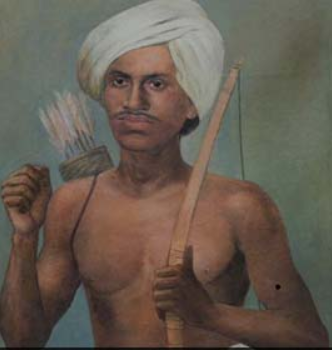
- Birth: 15th November 1875, belonged to the Munda tribe in the Chotanagpur Plateau area.
- Brief Profile:
- Also known as Dharti Aaba (Father of Earth), Birsa Munda is known to have mobilised the tribal community against the British and had also forced the colonial officials to introduce laws protecting the land rights of the tribals.
- Birsait Sect:
- Having gained awareness of the British colonial ruler and the efforts of the missionaries to convert tribals to Christianity, Birsa started the faith of ‘Birsait’.
- Members of the Munda and Oraon community joined the Birsait sect and it turned into a challenge to British conversion activities.
- Further, he urged the Mundas to give up drinking liquor, clean their village, and stop believing in witchcraft and sorcery.
- Munda Rebellion:
- It is one of the most important tribal movements.
- It was led by Birsa Munda in the south of Ranchi in 1899-1900.
- The movement identified following forces as the cause of the misery the Mundas were suffering:
- The land policies of the British were destroying their traditional land system.
- Hindu landlords and moneylenders were taking over their land.
- Missionaries were criticising their traditional culture.
- The 'Ulgulan' or the 'Great Tumult' as the movement came to be called, aimed at establishing Munda Raj by driving out the British.
- Munda used traditional symbols and language to rouse people, urging them to destroy “Ravana” (dikus/outsiders and the Europeans) and establish a kingdom under his leadership.
- Birsa’s followers began targeting the symbols of diku and European power. They attacked police stations and churches, and raided the property of moneylenders and zamindars. They raised the white flag as a symbol of Birsa Raj.
- On 3rd March, 1900, Birsa Munda was arrested by the British police while he was sleeping with his tribal guerilla army at Jamkopai forest in Chakradharpur (Jharkhand).
- Birsa died of cholera in the jail and the movement faded out.
- Significance of Munda Rebellion:
- It forced the colonial government to introduce laws so that the land of the tribals could not be easily taken over by dikus (Chotanagpur Tenancy Act, 1908).
- It showed that the tribal people had the capacity to protest against injustice and express their anger against colonial rule.
Jharkhand Foundation Day
- The name "Jharkhand" means "The Land of Forests". The state was brought into existence by the Bihar reorganization Act on 15th November, 2000 - the birth anniversary of the legendary Bhagwan Birsa Munda.
- Jharkhand shares its border with the states of Bihar to the north, Uttar Pradesh and Chhattisgarh to the west, Odisha to the south, and West Bengal to the east.
- Most of the state lies on the Chotanagpur Plateau, which is the source of the Koel, Damodar, Brahmani, Kharkai, and Subarnarekha rivers, whose upper watersheds lie within Jharkhand.
- Forest preserves support populations of tigers and Asian Elephants (Betla National Park).
- Jharkhand boasts of 40% and 29% of India's mineral and coal reserves, respectively.
- Jharkhand has 32 tribal groups including Munda, Kol, Santhal, Oraon, Khond, Asur, Gond etc.
Biodiversity & Environment
New Ramsar Sites
Why in News
Recently, the Meteor lake at Lonar in Buldhana district of Maharashtra and the Soor Sarovar at Agra have been declared Ramsar sites, a conservation status conferred by International Ramsar Convention on Wetlands.
- Earlier this year Kabartal Wetland (Bihar) and Asan Conservation Reserve (Uttrakhand) were also designated as Ramsar sites.
- With latest inclusions, the total number of Ramsar sites in India is 41, the highest in South Asia.
Key Points
- Lonar Lake
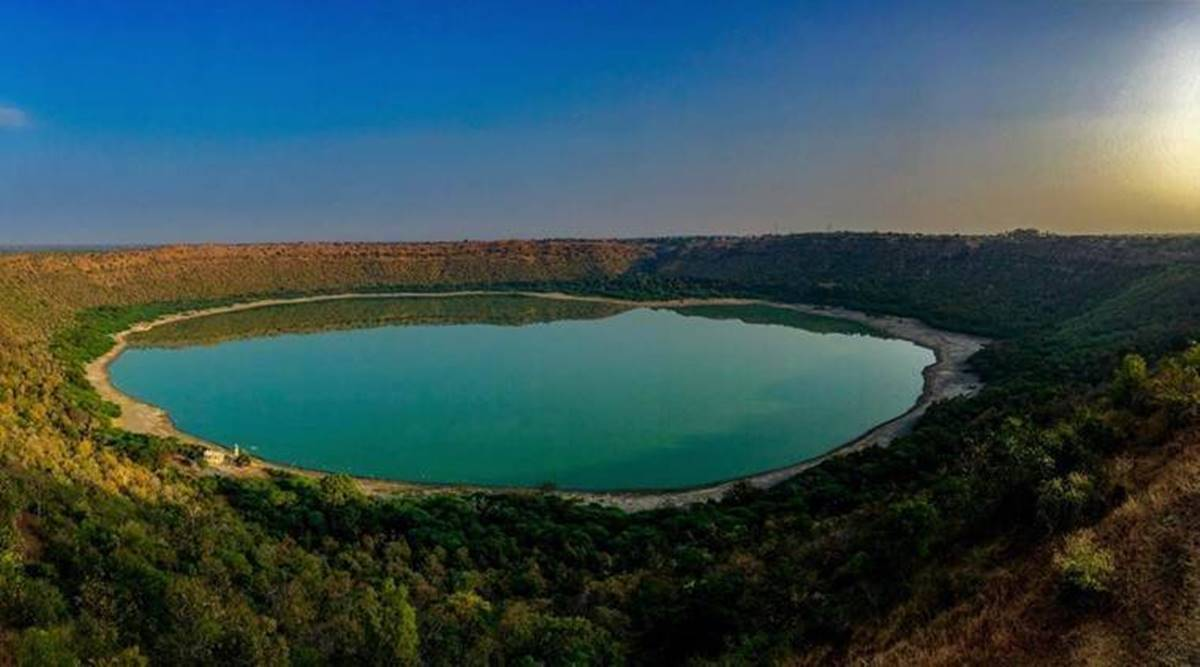
- Location:
- The Lonar lake, situated in the Deccan Plateau’s volcanic basalt rock, was created by the impact of a meteor 35,000 to 50,000 years ago.
- The lake is part of Lonar Wildlife Sanctuary which falls under the unified control of the Melghat Tiger Reserve (MTR).
- It is also known as Lonar crater and is a notified National Geo-heritage Monument. Geo-heritage refers to the geological features which are inherently or culturally significant offering insight to earth’s evolution or history to earth science or that can be utilized for education.
- It is the second Ramsar site in Maharashtra after Nandur Madhmeshwar Bird Sanctuary in Nashik district.
- The water in the lake is highly saline and alkaline, containing special microorganisms like anaerobes, Cyanobacteria and phytoplankton.
- Location:
- Soor Sarovar Lake:
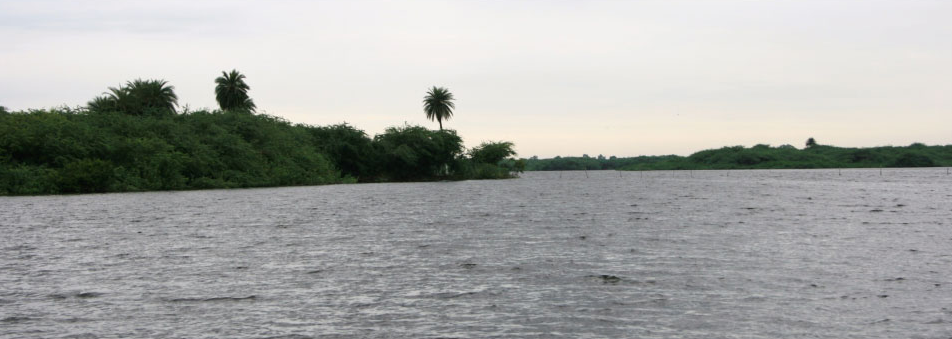
- It is also known as Keetham lake situated within the Soor Sarovar Bird Sanctuary, which was declared as a bird sanctuary in the year 1991.
- Location:
- This lake is situated alongside river Yamuna in Agra, Uttar Pradesh.
- The Soor Sarovar bird sanctuary covered an area of 7.97 sq km.
- It is today home to more than 165 species of migratory and resident birds.
- It also has a Bear Rescue centre for rescued dancing bears.
- Benefits:
- With Ramsar status, the sites will benefit in terms of international publicity and prestige.
- They will get Financial aid through the convention’s grant and also access to expert advice on national and site-related problems.
Ramsar Site
- Ramsar Convention on Wetlands is an intergovernmental treaty adopted in 1971 in the Iranian city of Ramsar, on the southern shore of the Caspian Sea.
- It came into force for India on 1st February, 1982. Those wetlands which are of international importance are declared as Ramsar sites.
- The Convention’s mission is “the conservation and wise use of all wetlands through local and national actions and international cooperation, as a contribution towards achieving sustainable development throughout the world.
- The Montreux Record is a register of wetland sites on the List of Wetlands of International Importance where changes in ecological character have occurred, are occurring, or are likely to occur as a result of technological developments, pollution or other human interference. It is maintained as part of the Ramsar List.
- At present, two wetlands of India are in Montreux Record:
- Keoladeo National Park (Rajasthan) and
- Loktak Lake (Manipur).
- Chilika Lake (Odisha) was placed in the record but later removed from it.
Important Facts For Prelims
Quick Reaction Surface-to-Air Missile System
Why in News
Recently, Defence Research and Development Organisation (DRDO) successfully test-fired Quick Reaction Surface-to-Air Missile system (QRSAM).
- The test was conducted at the Integrated Test Range, Chandipur off Odisha coast.
- The Test was in continuation of a series of missile tests conducted by DRDO over the past two months.
Key Points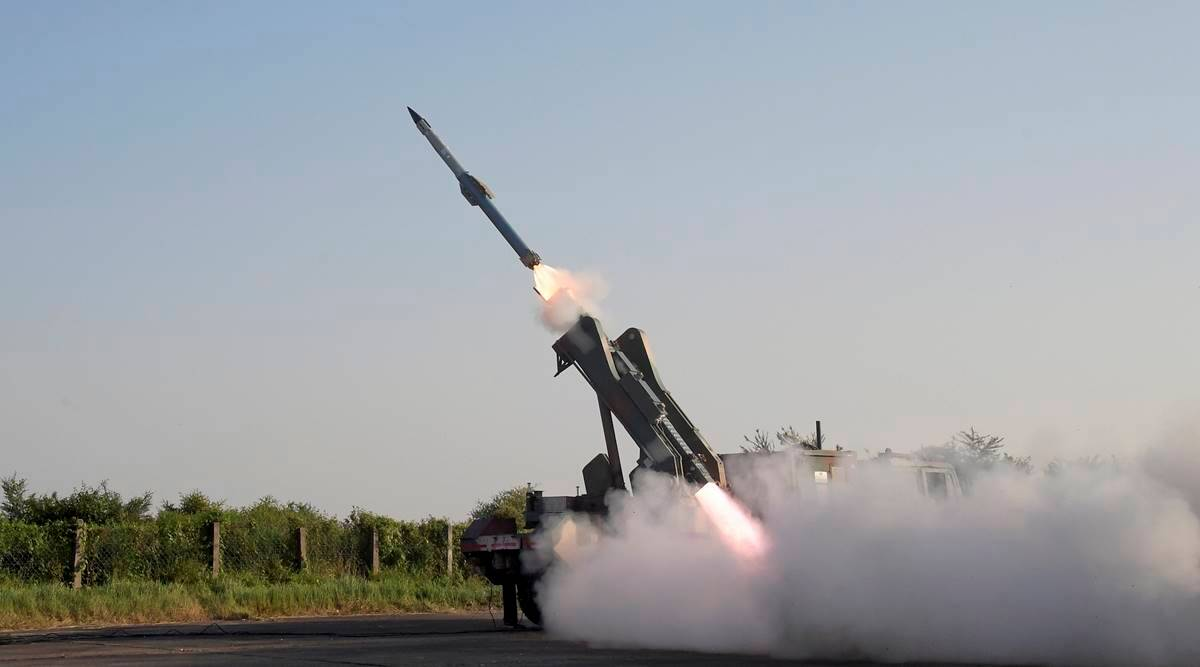
- QRSAM is a canister-based system, which means that it is stored and operated from specially designed compartments.
- In the canister, the inside environment is controlled, thus along with making its transport and storage easier, the shelf life of weapons also improves significantly.
- The system is capable of detecting and tracking targets on the move and engaging targets with short halts.
- Range and mobility:
- It is a short range surface-to-air missile (SAM) system, primarily designed and developed by DRDO to provide a protective shield to moving armoured columns of the Army from enemy aerial attacks.
- The entire weapon system has been configured on a mobile and manoeuvrable platform and is capable of providing air defence on the move.
- It has been designed for induction into the Army and has a range of 25 to 30 km.
- Functioning:
- The QRSAM weapon ensemble which functions on the move consists of a fully automated command and control system.
- It also consists of two radars - Active Array Battery Surveillance Radar and Active Array Battery Multifunction Radar - with one launcher.
- Both radars have 360-degree coverage with “search on move” and “track on move” capabilities.
- The system is compact, uses a single stage solid propelled missile and has a mid-course inertial navigation system with two-way data link and terminal active seeker developed indigenously by DRDO.
- The QRSAM weapon ensemble which functions on the move consists of a fully automated command and control system.

